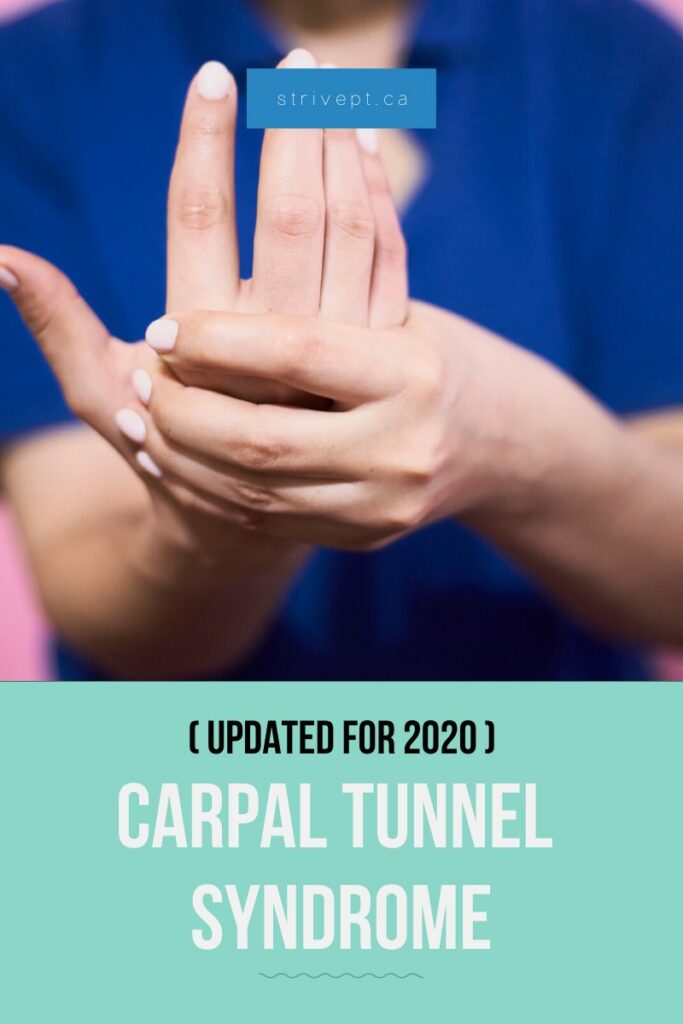
You start having a bit of hand pain or weird sensations in your fingers.
You mention it to your friend and they start telling you about how you have a “tunnel in your carpal”?
I agree, sounds confusing. So let’s start with the basics of this condition, and clear things up.
What are carpals?
Carpals are the small bones in your hand/wrist (in the lower quarter of your palm). There are 8 carpal bones in each hand.
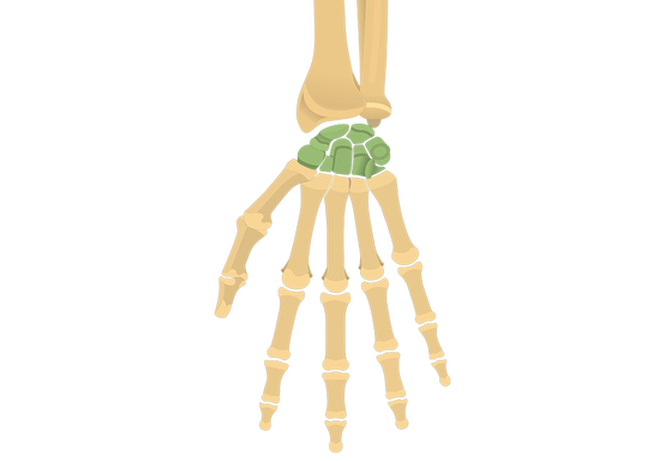
What is a carpal tunnel?
In addition to the carpal bones, you have ligaments, muscles, tendons, nerves, arteries, and veins throughout your entire wrist.
The carpal tunnel portion is formed by your flexor retinaculum (a band of fibrous connective tissue) running over the top of your carpal bones on the inside part of your wrist.
Inside this area are some wrist flexor tendons and the median nerve (and other tissues too).
Everyone has this carpal tunnel!
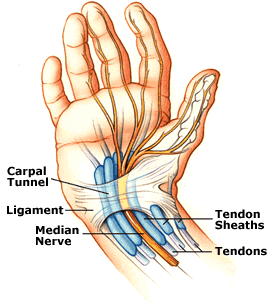
Why do people complain about having a carpal tunnel?
When people you know are saying that they’ve had carpal tunnel before, they really mean they’ve had “Carpal Tunnel Syndrome”.
This is a combination of symptoms which can include pain, tingling, pins and needles, numbness, and weakness in the hand.
This is particularly evident with symptoms in the outside three fingers (and sometimes part of the 4th!), as seen in the image below.
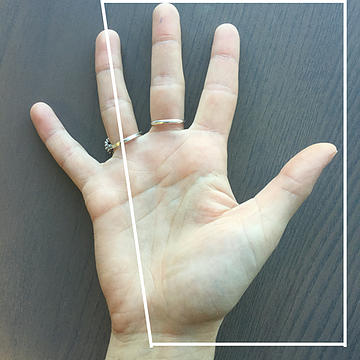
What causes carpal tunnel symptoms?
These symptoms can be caused by increased pressure on the median nerve (inside the carpal tunnel)
Which can come from irritation and inflammation of the flexor tendons (there’s only so much space in there!).
This can be from overuse of your wrist muscles, usually with repetitive flexion and extension movements (some factory workers).
This irritation can become even worse with having to use heavy grip strength. Using vibrating tools (ie. a construction worker) can double the prevalence of carpal tunnel syndrome.
It can also be worsened by prolonged end range positioning of your wrist. Interestingly, rates of carpal tunnel syndrome have not been indicated to be higher compared to the general population in individuals who use a computer for work,
Put pain relief may be achieved by those who do have carpal tunnel syndrome to create rest breaks from the computer and to set up their desk in an ergonomic way to avoid prolonged wrist extension.
Note:
Pregnancy also can cause a carpal tunnel syndrome flare up as a result of hormonal changes and resulting swelling.
Typically, carpal tunnel syndrome will resolve after delivery but the symptoms can be managed in the meantime while you are pregnant.
I think I have this!
It’s important to note that these hand symptoms can also be caused by injuries or compression to the median nerve higher up in the arm at the elbow, shoulder, or neck.
There are also other causes of wrist/hand pain. It is important to see a physiotherapist to differentiate the cause of the symptoms in order to provide an appropriate treatment plan for the cause of the symptoms.
What can I do to help my carpal tunnel syndrome symptoms?
One of the most important things that you can do to improve the symptoms of carpal tunnel syndrome is to modify the activities that are aggravating it.
By doing this, you can provide your wrist with “relative rest”.
Please note : Complete rest (ie. having your arm in a sling so you don’t use it at all) will not get you better!
- Do you use vibrating power tools all day at work? Build in multiple break times from these tools throughout the day to limit your exposure to them.
- Do you do a repetitive flexion and extension motion with your wrist? Modify the task by using the force of your body instead of just your wrist.
- Do you typically hold your wrist in the end range for your job? Take frequent breaks and move your wrist out of that position to ease the aggravation.
- Do you use a lot of grip strength while you’re at work? Use tools to help you out to limit the gripping that you have to do or take breaks throughout the day.
Even with modifying your work environment and tasks, you will likely find a benefit from using a wrist brace or splint at night.
These are designed to keep your wrist in a neutral position and to prevent your wrist getting caught and twisted while you’re sleeping.
This will allow for the aggravated median nerve and flexor tendons in your carpal tunnel to rest and recover in a neutral position overnight.
It is important to continue moving your wrist to optimize the recovery of the tendons that are irritated as well as the recovery of the median nerve.
You can do this by bending your wrist slowly forward, and slowly back 5 times each direction, 10 times per day.
You can also improve the movement of the median nerve to aid it’s recovery by doing nerve glides.
Start with your shoulder out to the side with your palm facing up, and curl your elbow and wrist in toward your head while moving your ear towards the opposite shoulder.
Then, extend your elbow and wrist out to the side while bring your ear to the same shoulder.
Repeat 10x very gently,
not pushing into any symptoms, 3 times per day.
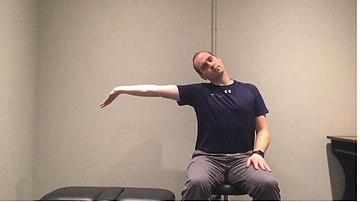
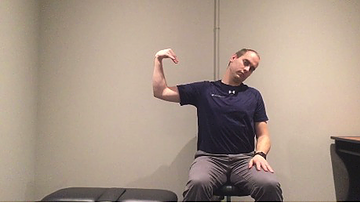
As always, depending on the occupation you have, your recreational activities, your symptoms, and your medical history, the advice and exercises that you receive from a physiotherapist will be specific to you.
Do you have some hand symptoms that haven’t gone away?
Call us at 519-895-2020, or use our online booking tool on www.strivept.ca to book an appointment with one of our knowledgeable physiotherapists, and they will perform an assessment and create a treatment plan for you.
Cheers, Amanda McFadden Physiotherapist at Strive Physiotherapy and Performance